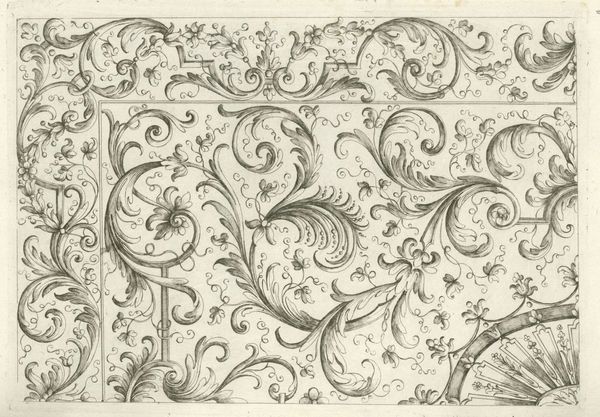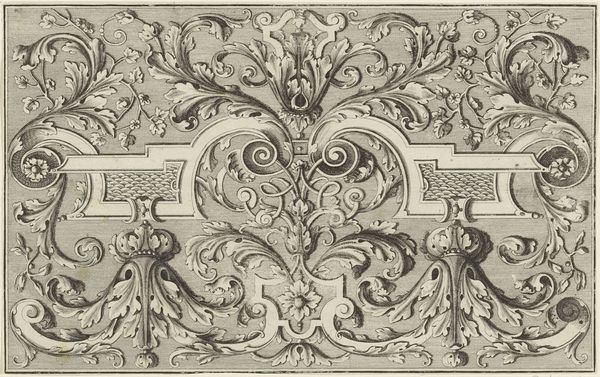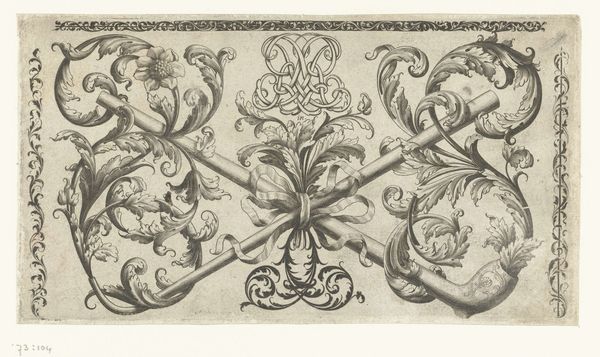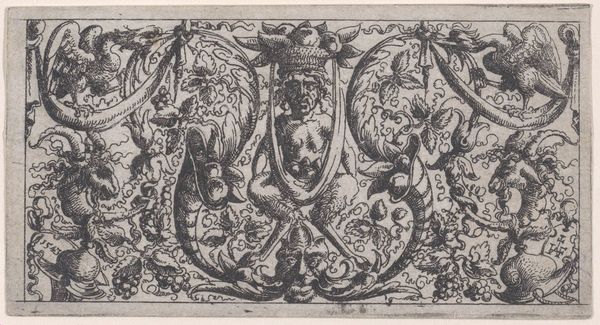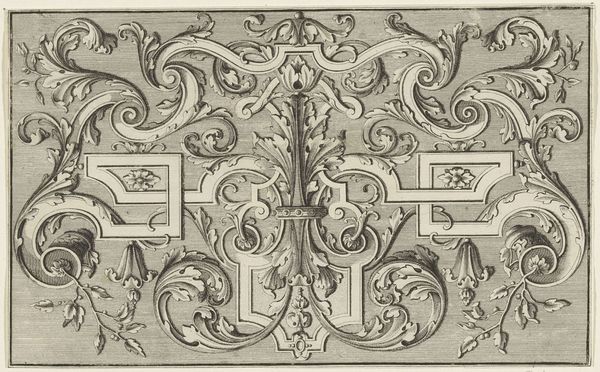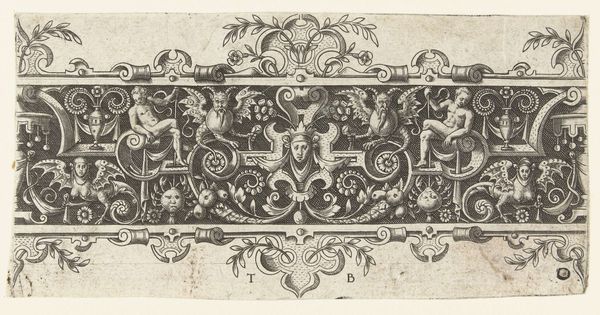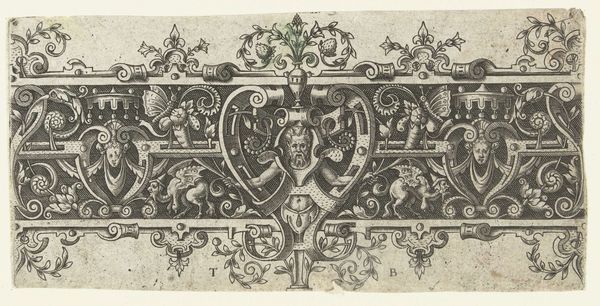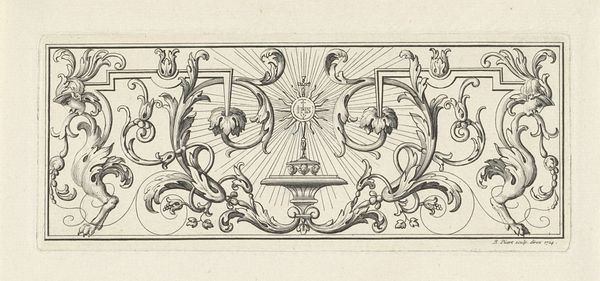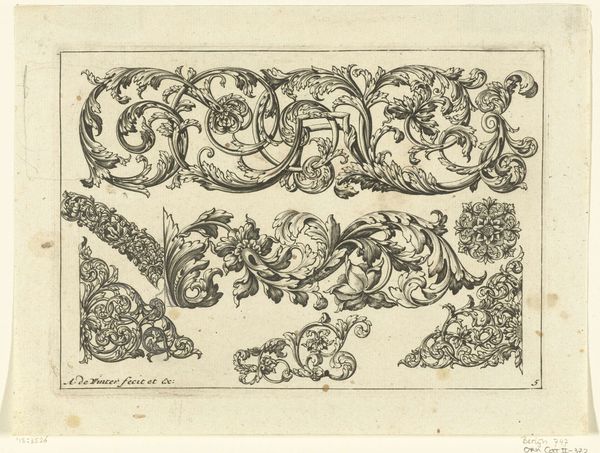
drawing, print, ink, engraving
#
drawing
#
pen drawing
# print
#
ink line art
#
11_renaissance
#
ink
#
geometric
#
thin linework
#
line
#
pen work
#
northern-renaissance
#
engraving
Dimensions: height 84 mm, width 135 mm
Copyright: Rijks Museum: Open Domain
Editor: This is "Three Friezes with Arabesques Above Each Other" by Daniel Hopfer, made sometime between 1480 and 1536. It’s an engraving, a print with a lot of very fine lines. The image feels…decorative. What do you see in this piece, beyond its ornamental quality? Curator: The decoration itself is key. Consider the era: late 15th to early 16th century. What stories are these arabesques telling? Are they purely aesthetic, or are they coded with symbolic meaning related to class, trade, or cultural exchange? Notice how the 'DH' monogram sits prominently – whose identity is being asserted here and what power does that confer? How might these designs function within a broader social hierarchy? Editor: So you’re saying we need to look at the historical context. Is the artist perhaps making a statement about craft versus "high" art? Curator: Exactly. Who consumes these prints, and how does it differentiate them? The printing press democratizes art in one sense, but access is still limited. Do these arabesques reflect the cultural influences filtering into Europe at the time—perhaps from the Islamic world through trade routes? How does it affirm or challenge existing social orders? Editor: That’s fascinating. I was just looking at it as a pretty design, but thinking about its place in society at the time… it completely changes the perspective. Curator: Precisely! The power of art lies in understanding these complex interactions, interrogating the role that aesthetics play in affirming or subverting social dynamics. Each line has a story when situated in the correct context. Editor: I’ll definitely be thinking about art this way from now on. Thanks for opening my eyes.
Comments
No comments
Be the first to comment and join the conversation on the ultimate creative platform.
